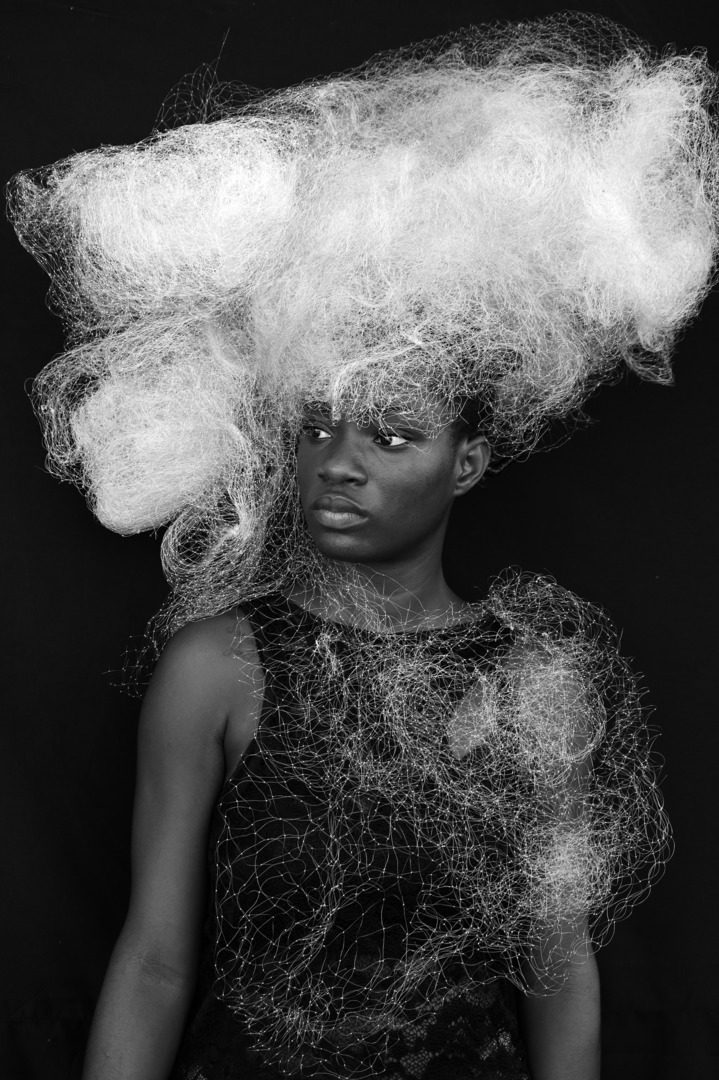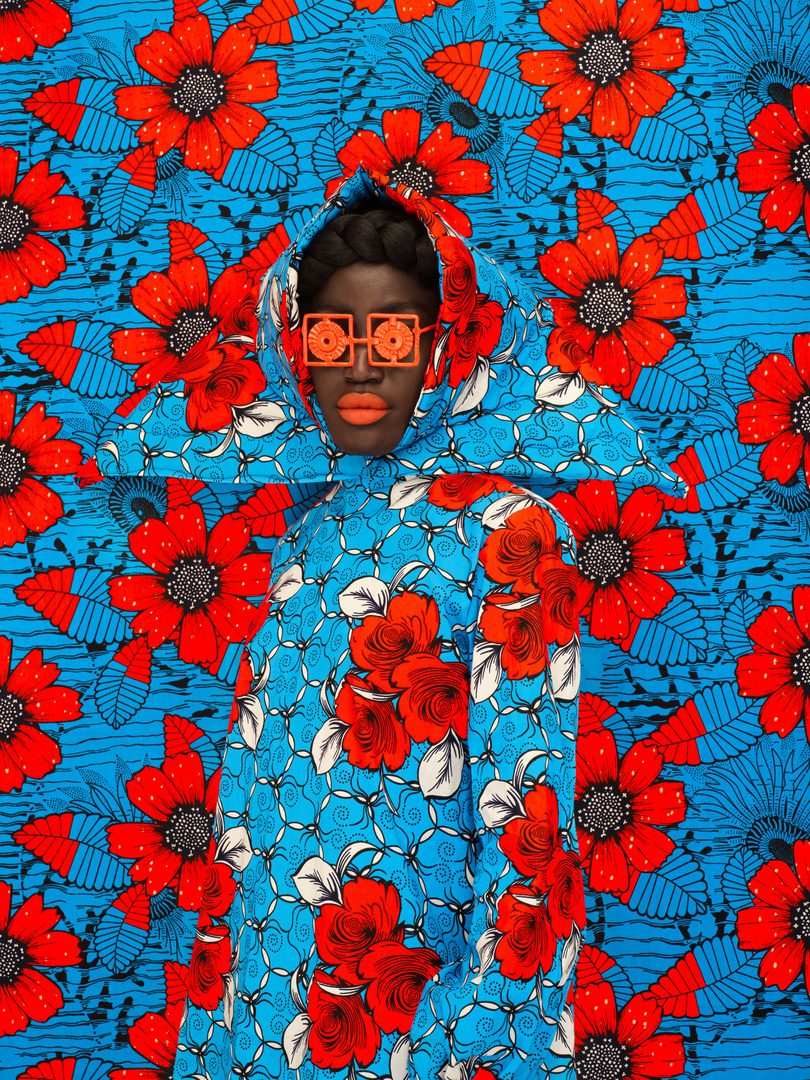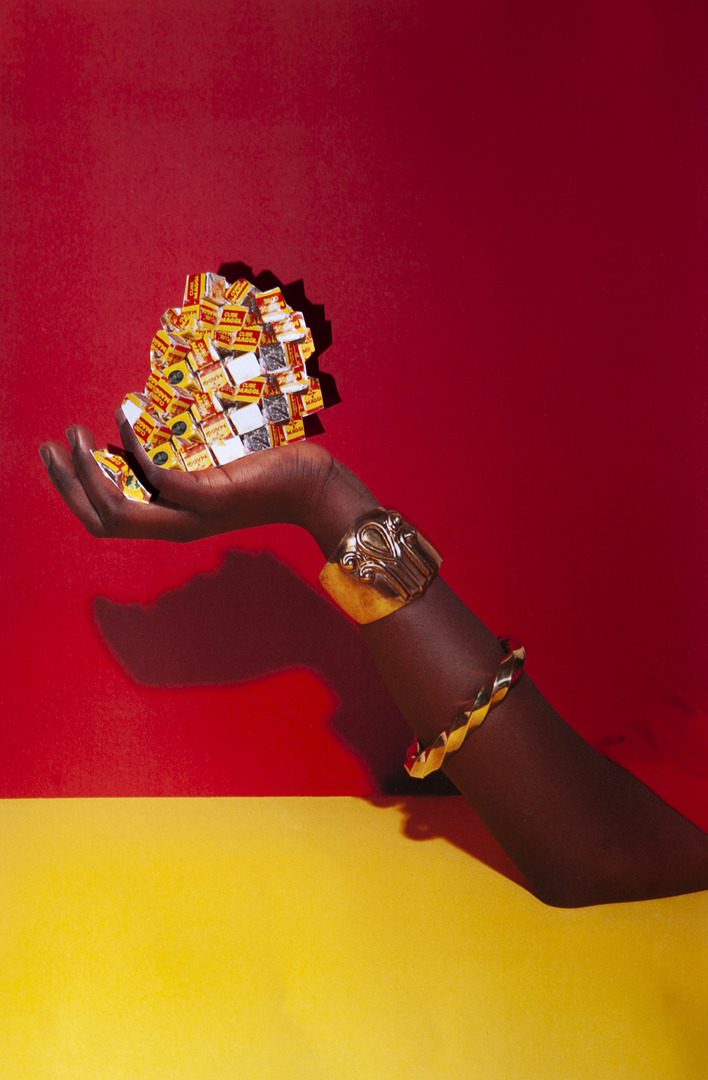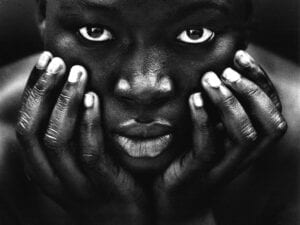“Naked woman, Black woman // Clothed with your colour which is life, with // your form which is beauty.” These are the opening lines to a poem written by the late president of Senegal, Léopold Sédar Senghor. He wrote it whilst imprisoned in Germany during World War II, longing to be reunited with the women in his family. The words became intertwined with hope for freedom; their beauty and power brought him solace. Now, Seattle Art Museum, lackpuffin and Wa Na Wari present Femme Noire, a show set to transform the city’s Central District this summer. Inspired by the vision of Black women in Senghor’s poem, the show celebrates women artists from Africa and the diaspora. Below is a selection of talented, trailblazing photographers who explore topics of representation, colonisation and expression.

Tisser Une Nouvelle Histoire 4 (2019) is a monochromatic shot of a Black woman. She defies the camera’s attention as she focuses on a far-off point audiences cannot see. A mass of soft, white lace covers her hair and cascades over one shoulder. Her pose is confident and authoritative. The piece is part of Cameroonian photographer Angèle Etoundi Essamba’s (b. 1962) Renaissance series (2019). It challenges how collars, lace and fans were luxuries reserved for the white elite during the Dutch Golden Age. The piece is reminiscent of Heather Agyepong’s Too Many Blackamoors (2021), a work of re-enactment photography in response to the exclusion of Black women from court in the sixteenth century, as well as the macro and micro traumas of racism they encountered whilst travelling around European countries.
Essamba’s portrait resists the gaze of the western art canon, which prevailingly presents Black women in positions of dependence, passivity and submissiveness. Instead, she offers up a fresh perspective, stating, “Very often, you will see these images of African women working in the fields and carrying babies on their back. I am not saying that those images are not realistic, but it is not the only reality. I believe photography can be a powerful medium to communicate a new image of African women.”

Femme Noire showcases a variety of thoughtful approaches to contemporary portraiture. Thandiwe Muriu (b. 1990), for example, investigates the concepts of adornment and self-expression. Her eye-catching series Material Culture is inspired by the elaborate headwraps her mother wears for church and special events. It is a crown that she shapes and styles for different occasions. In Full Bloom (2022) shows a vibrant profusion of red flowers and blue leaves that camouflages the subject into the background. Here, the signature scarf is worn with a knot tied below the jaw, so that it extends and blends into the wall behind. Elsewhere, the fabric’s styling is reminiscent of an oversized bow, where oranges and reds stand out against royal blue. It’s a bold display of creativity that exudes confidence and glamour.
Elsewhere, Adji Dieye (b. 1991) uses a vibrant palette for a different purpose. Her work centres on the representation of West African countries after independence, in particular, focusing on the consumer impact of global brands. The series Magic Cube (2016-2019) addresses the west’s monopolisation of international markets, emblematised through the vector of the Maggi stock cube. Maggi – now owned by Nestle – was first introduced to Senegal following the Berlin Conference in 1885, when European powers such as Britain, France and Germany decided on economic plans for Africa. The artist traces the product’s complex history from the 19th century to today. She notes how the product’s promotion has conveyed “the idea that the stock cube is are one of the most traditional elements of West African cuisines.” In 2023, the ubiquitous Maggi cube is instantly recognisable, marketed through lurid red and yellow stripes – as used by many brands such as McDonald’s and Burger King – due to their psychological association with hunger and consumption. One image captures a disembodied arm that holds a leaning stack of stock cubes in the palm of their hand. It’s a reminder of the long, exploitative, imperial history behind items which seem, on the surface, as though they’ve always been there.

The series is timely, and brings to mind Wellcome Collection’s Milk exhibition in London, which looks at the Western promotion of dairy products throughout the British Empire. The aggressive advertising of formula over breastfeeding lead to a dependence on Nestle products. The impact, however, was severe. Many mothers were left unable to afford formula, forced to juggle access to limited clean water. As a result, many infants in Nigeria, Kenya and Malaysia were left malnourished, or unwell. Dieye points to a colonial history responsible for today’s overdependence on processed products.
These artists encourage us to look again. They counter the prevailing associations audiences have with people and products, reminding us all narratives have a complex and loaded history. Femme Noire pushes past superficial representations to show there is more to everything – even the smallest ingredient – than meets the eye. We’re reminded that the western gaze is merely one narrow and enforced viewpoint. Here, we can experience photographs of African women according to creativity, strength and cultural nuance.
Central District, Seattle: Femme Noire | August 21 – September 30
Words: Diana Bestwish Tetteh
Image Credits:
- Tisser une nouvelle histoire 4, from the series <em>Renaissance</em>, 2019, Angèle Etoundi Essamba, black & white photograph, Courtesy of the artist.
- In Full Bloom, 2022, Thandiwe Muriu, photograph, Courtesy of Thandiwe Muriu & 193 Gallery.
- Magic Cube, Matiere Premiere, 2019, Adji Dieye, Lambda print on aluminum, 39 3/8 x 26 3/8 in., Courtesy of the artist.





